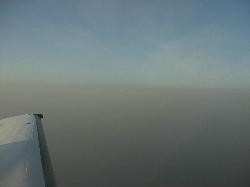Wed, Apr 21, 2010
Advertisement
More News
 ANN's Daily Aero-Term (08.26.25): TRSA Service
ANN's Daily Aero-Term (08.26.25): TRSA Service
TRSA Service This service provides, in addition to basic radar service, sequencing of all IFR and participating VFR aircraft to the primary airport and separation between all parti>[...]
 ANN's Daily Aero-Linx (08.26.25)
ANN's Daily Aero-Linx (08.26.25)
Aero Linx: United Flying Octogenarians WELCOME to a most extraordinary group of aviators, the United Flying Octogenarians (UFO). Founded in 1982 with just a handful of pilots, we h>[...]
 NTSB Final Report: Maule M7
NTSB Final Report: Maule M7
(Pilot) Landed With A Quartering Tailwind On A Short Runway With Limited Go-Around Options Analysis: The pilot reported that he attempted to land at his home airstrip using a &ldqu>[...]
 Classic Aero-TV: Team Aerostars - New Extras Upgrade Team's Performance
Classic Aero-TV: Team Aerostars - New Extras Upgrade Team's Performance
From 2019 (YouTube Edition): Yak 52s Have Been Replaced With Extra Aerobatic Airplanes For 2019 The Phillips 66 Aerostars have been performing together, side by side at around 250 >[...]
 ANN FAQ: Submit a News Story!
ANN FAQ: Submit a News Story!
Have A Story That NEEDS To Be Featured On Aero-News? Here’s How To Submit A Story To Our Team Some of the greatest new stories ANN has ever covered have been submitted by our>[...]
blog comments powered by Disqus





